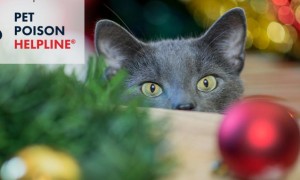Hepatic Lipidosis in Cats: Understanding Feline Fatty Liver Disease
Hepatic lipidosis, commonly known as fatty liver disease, is one of the most critical metabolic liver disorders observed in cats. Despite its dire consequences, this condition is often preventable and manageable when addressed promptly. Understanding its causes, symptoms, diagnosis, and treatment is essential for cat owners and veterinarians alike.
What is Hepatic Lipidosis?
Hepatic lipidosis occurs when there is an abnormal accumulation of fat in the liver cells (hepatocytes). While it is normal for the liver to contain some fat, excessive fat accumulation can impair liver function and lead to serious health problems. This condition is particularly common in overweight or obese cats who experience rapid weight loss, whether due to dietary changes, underlying medical issues, or stress-related factors.
Causes of Hepatic Lipidosis
The main instigating factor for hepatic lipidosis in cats is a dramatic calorie deficit. When cats are not eating enough, their bodies begin to mobilize fat stores for energy. However, in cats, the liver is not well-equipped to process large amounts of fat quickly, leading to fat accumulation. Factors contributing to this rapid weight loss might include:
- Obesity: Cats that are overweight are at a greater risk when they quickly lose weight.
- Anorexia: Illnesses, dental issues, or environmental stresses can lead to decreased appetite.
- Chronic Illnesses: Diseases such as diabetes, kidney disease, or hyperthyroidism often result in weight loss that can trigger hepatic lipidosis.
- Stress: Changes in the environment, such as moving to a new home or the introduction of new pets, may cause stress-related anorexia.
Symptoms
The symptoms of hepatic lipidosis can vary widely among cats but often include:
- Loss of Appetite: Cats may refuse food or exhibit a decreased interest in eating.
- Weight Loss: A noticeable decrease in body weight, particularly over a short timeframe.
- Lethargy: A lack of energy and reluctance to engage in normal activities, resulting in increased sleepiness.
- Jaundice: Yellowing of the skin, eyes, or mucous membranes due to elevated levels of bilirubin in the blood.
- Vomiting and Diarrhea: Gastrointestinal upset resulting from liver dysfunction.
- Changes in Behavior: Some cats may become more withdrawn or appear depressed.
Diagnosis
Diagnosing hepatic lipidosis typically involves a thorough veterinary examination and a combination of diagnostic tests. The veterinarian will likely perform:
- Physical Examination: Checking for signs of jaundice, and assessing weight loss and overall body condition.
- Blood Tests: Evaluating liver enzymes, bilirubin levels, and other indicators of liver function. Elevated liver enzymes can indicate liver cell damage.
- Ultrasound: Imaging may be performed to visualize the liver and assess fat distribution.
- Liver Biopsy: In some cases, a biopsy may be necessary to confirm the diagnosis and understand the severity of the condition.
Treatment
The treatment of hepatic lipidosis is multifaceted, primarily centering on addressing the underlying cause and providing supportive care. Key treatment modalities include:
- Nutritional Support: Cats with hepatic lipidosis often require an aggressive feeding plan, even if it means using a feeding tube to ensure they receive adequate nutrition. A high-protein diet with highly palatable food options is often recommended to encourage eating.
- Fluid Therapy: To address dehydration and support liver function, fluid therapy may be initiated.
- Medications: Depending on the underlying cause of anorexia, medications may be prescribed. This can include anti-nausea drugs, appetite stimulants, or medications to manage other concurrent illnesses.
- Monitoring: Frequent monitoring of liver function through blood tests is essential to assess response to treatment and make necessary adjustments.
Long-term Management and Prognosis
The prognosis for cats with hepatic lipidosis is variable. With prompt diagnosis and treatment, many cats can recover fully and return to normal liver function. However, cats that experience severe liver damage may face a more guarded prognosis. Long-term management may include regular veterinary check-ups to monitor liver health, dietary modifications, and weight management strategies to prevent obesity-related complications in the future.
Conclusion
Hepatic lipidosis in cats is a serious condition that requires immediate attention. Understanding the risk factors, signs, and necessary interventions can save a cat’s life. Education and awareness are crucial in ensuring the well-being of our feline companions. If you notice any warning signs, contact your veterinarian promptly to discuss your cat’s health and potential preventive measures.






